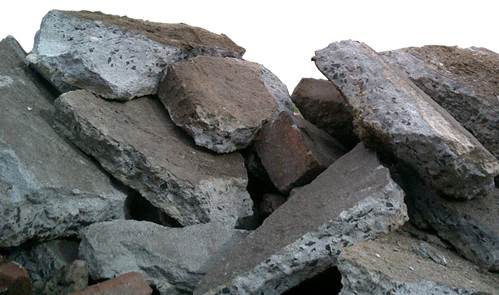
Concrete

"After water, concrete is the most widely used substance on Earth. If the cement industry were a country, it would be the third largest carbon dioxide emitter in the world with up to 2.8bn tonnes, surpassed only by China and the US." The environmental disbenefits of concrete are many.
Concrete has a large environmental footprint, mostly due to it being a cement product. It takes a huge amount of energy to heat limestone, cement’s key ingredient, and subsequent chemical processing required. The process of creating cement emits upwards of 80% of the cement’s weight in carbon dioxide and accounts for about 5% of human-generated CO2 emissions annually.
Check out hempcrete as an alternative building material.
Your demolition rubble can only be recycled if kept environmentally clean, i.e. separate from general waste, organic garden and food waste, and any hazardous substances. Concrete waste can be reprocessed for new roads or landscaping projects.
Check with the waste transfer station in Liffiton Street.